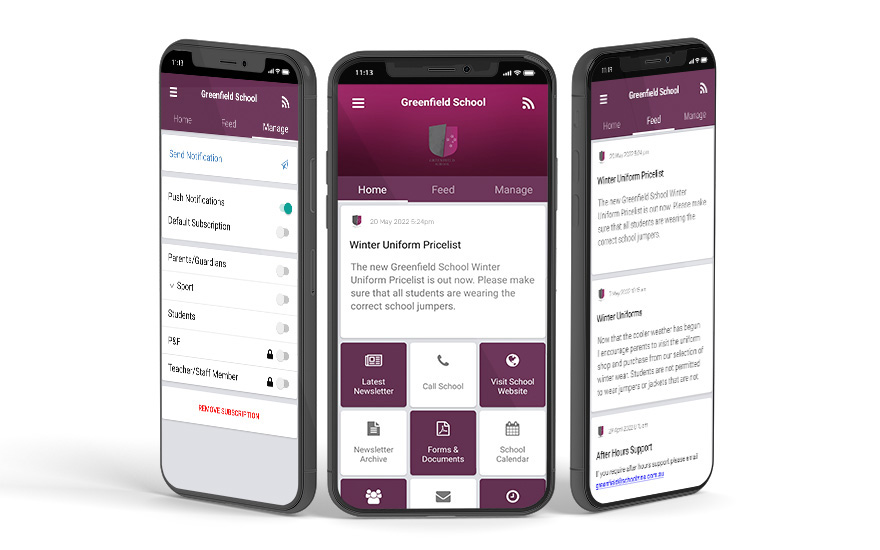In an era where technology plays a crucial role in education, having a well-designed and functional school website is no longer a luxury, it’s a necessity. A school’s website serves as a virtual front door, providing students, parents, and the entire community with important information and insights into the institution’s values and offerings. However, embarking on the journey of building a school website can be both exciting and overwhelming. To ensure you’re on the right track and avoid potential pitfalls, we’ve compiled a comprehensive guide to answer your burning questions.
1. Why is a School Website Important?
A school website acts as a digital hub where various stakeholders can access information ranging from curriculum details and faculty profiles to event calendars and important announcements. It’s often the first point of contact for parents seeking information about enrolment, and it can help create a positive first impression of the school.
2. What Key Features Should a School Website Have?
When planning your school website, consider including the following essential features:
· Homepage with Clear Navigation: A user-friendly homepage that offers easy navigation to different sections of the website.
· About Us: Information about the school’s history, mission, values, and facilities.
· Academic Programs: Detailed descriptions of the curriculum, courses offered, and educational approach.
· Faculty and Staff: Profiles of teachers and staff members to build credibility and familiarity.
· Admissions Information: Instructions for enrolment, application forms, and admission criteria.
· Events Calendar: An up-to-date calendar showcasing school events, holidays, and important dates.
· News and Announcements: Latest news, announcements, and newsletters.
· Contact Information: Clear contact details and a contact form for inquiries.
· Resource Downloads: Documents such as handbooks, forms, and other resources.
· Gallery: Photos and videos of school events, activities, and campus.
3. What Design Elements Should You Consider?
The design of your school website should reflect your institution’s identity. Here are some considerations:
· Branding: Incorporate your school’s colours, logo, and visual elements for a consistent brand identity.
· Responsive Design: Ensure your website is accessible and looks great on various devices, including smartphones and tablets.
· User-Friendly Layout: Opt for a clean and organized layout that guides visitors through the website seamlessly.
· Visuals: Use high-quality images and videos to showcase campus life and activities.
· Typography: Choose readable fonts that match your school’s tone and personality.
· Accessibility: Ensure your website follows accessibility guidelines to accommodate users with disabilities.
4. DIY vs. Professional Web Developers: Why should I choose Schoolzine?
While there are DIY website builders available, opting for a professional web developer offers several advantages. They can provide a custom design tailored to your school’s unique needs and ensure that the website is secure, functional, and optimised for search engines. Schoolzine has revolutionised the way educational institutions establish their online presence. With a range of customisable templates and user-friendly tools, Schoolzine empowers schools to create websites that reflect their unique identity and ethos. From vibrant designs to intuitive navigation, Schoolzine’s platform streamlines the website creation process, ensuring a polished outcome that resonates with your school community.
5. How Can You Maintain and Update the Website?
Regular maintenance and updates are essential to keep your school website relevant. Consider implementing a content management system (CMS) that allows authorised staff to easily edit and add content. Regularly update the calendar, news, and other important sections to keep visitors informed.
6. What Pitfalls Should You Avoid?
· Lack of Clear Information: Ensure all relevant information is easy to find and up to date.
· Complex Navigation: Keep the navigation simple and intuitive, avoiding excessive dropdown menus.
· Overcrowded Pages: Don’t overwhelm visitors with too much information on a single page.
· Ignoring Mobile Users: A large portion of your audience will access the website on mobile devices, so prioritise responsive design.
· Ignoring Analytics: Implement website analytics to track user behaviour and improve over time.
In the era of digital engagement, school websites serve as windows into the heart of your institution. With Schoolzine’s innovative platform, crafting an exceptional school website has never been easier. From design flexibility to seamless communication, Schoolzine empowers schools to build and maintain websites that capture their essence while fostering strong community connections.
Ready to embark on your school’s digital journey? Explore the possibilities with Schoolzine today!







